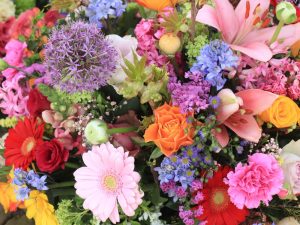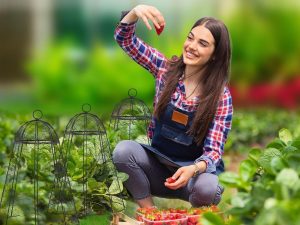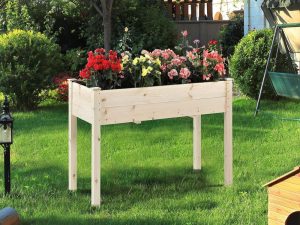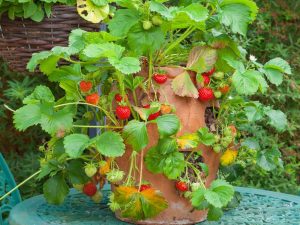Last Updated on September 16, 2024 by teamobn
These days, digging some holes and planting some salad greens or a few radishes has become a political statement. Decades ago, homeowners grew Victory gardens at the behest of governments marshaling resources for World War II.
Today, in community gardens and backyards, a new victory garden movement has captured the attention of people in a fractured economic environment.
In cities and in suburban areas, there is a surging interest in growing vegetable garden in containers. Retailers around the world are experiencing hefty sales increases for organic products. Online retailers are reporting the highest sales growth.
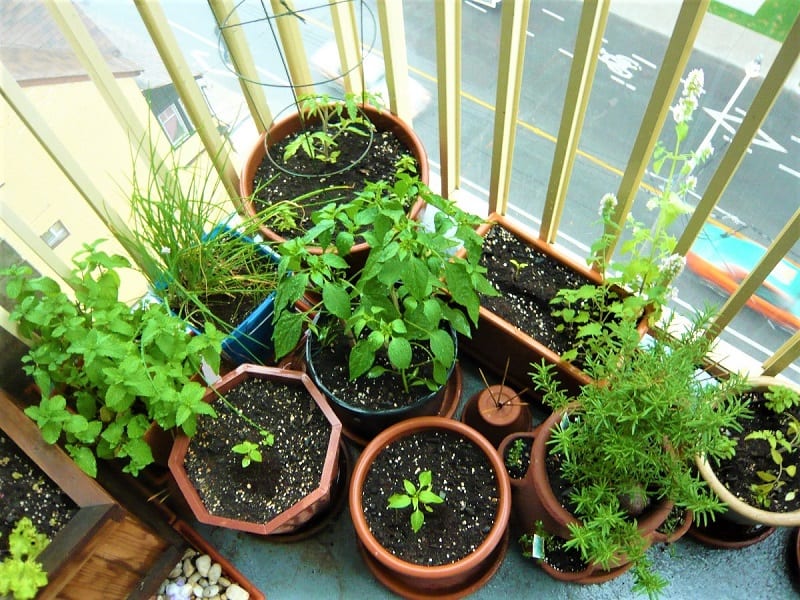
(Photo: Bad Alley Cat/Flickr)
Growing Vegetable Garden in Containers
Contents
Do you live in an apartment or a small home and yearn to grow your own fresh organic vegetables? Don’t let a perceived lack of space stop you. Container gardening allows you to grow organic vegetables even in the smallest of spaces.
That means homeowners with small yards – and urbanites who have nothing more than balconies or window sills – can grow organic vegetables, too.
Below are a few tips to help you get started on an organic vegetable garden in containers.
Choose The Right Location
Choosing the right location of your vegetable garden in containers is important. Most vegetables need at least six hours of direct sunlight each day. Yes, people grow gardens in fire escape landings, balconies, window sills, rooftops, and yard-aisles only a few feet wide.
But finding the right spot can be tricky. Do not overestimate how much sun an area receives. You need an accurate assessment.
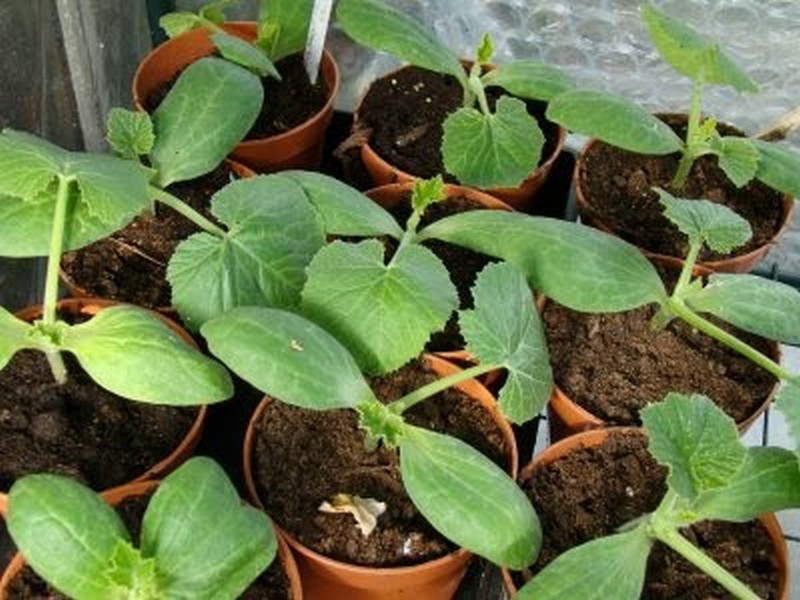
Check your chosen location every 30 minutes throughout the day to confirm the hours of its exposure to full sunlight. That will require some diligence, but your garden will reward your persistence with ample harvests later on.
If you live in a hot climate, you may need to shelter your plants during the heat of the afternoon. If you live in a cool climate, avoid setting your vegetable garden in containers out in the cold all day until the temperature becomes reliably warm. Most plants require soil temperatures of at least 15°C.
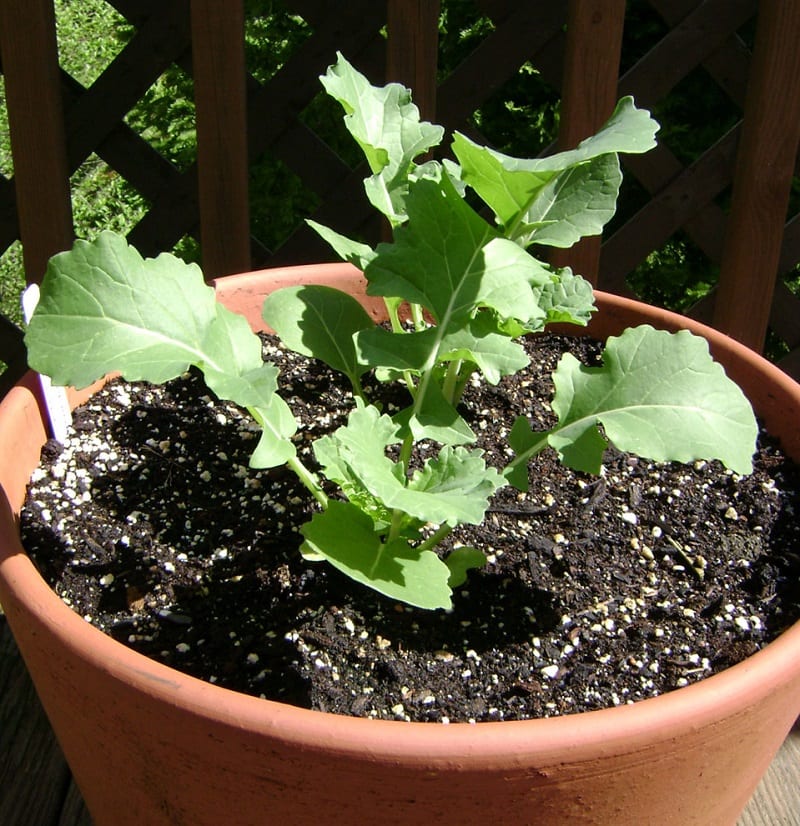
Select Containers For Your Garden
You will need containers that will work for the vegetable varieties you want to grow. Tall pots are best for deep-rooted plants, shrubs, or small trees. Small pots are good for shallow-rooted plants and bulbs.
You may need hanging baskets for cascading plants or vines. If none are available, you can train vines to climb on trellises, a low fence, or even balustrades.
Clay pots are popular. They go well with most home decor and foliage. Plastic pots are inexpensive and available in a range of colors.
But you can also use almost any household object: from bowls and boxes to buckets, wicker baskets, old bathtubs, and used boots. You can use anything with depth, adequate drainage holes, and a flat bottom.
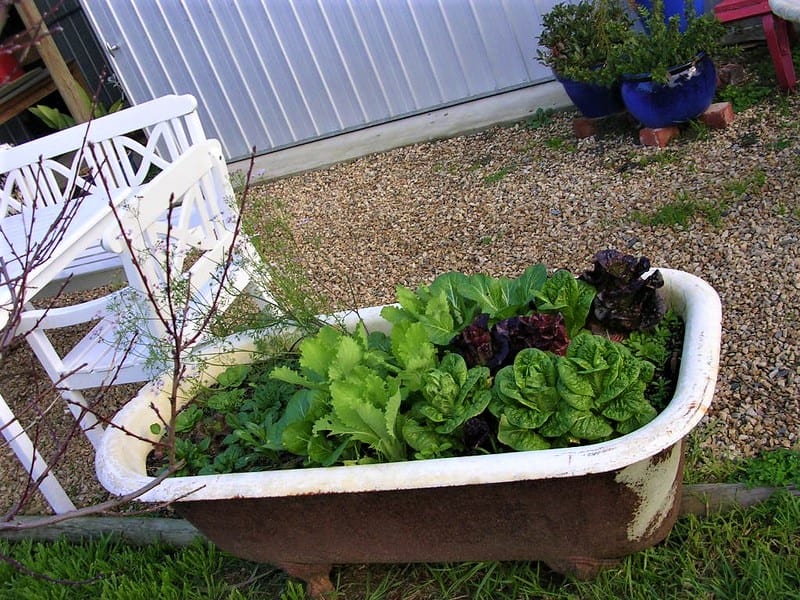
(Photo: Michael Coghlan/Flickr)
Use An Organic Growing Medium
Most commercial potting soils – also known as growing mixes – contain synthetic ingredients such as chemical fertilizers and wetting agents. But more and more garden centers are selling organic potting soils. Those are a good option if you have only a few containers.
If you need to grow your vegetable garden in containers and want to keep your expenses to a minimum, you can mix your own potting soil. This will require some research and experimentation as there are endless variations on ingredients, ratios, and amounts you can use.
The simplest approach for your vegetable garden in containers is to mix equal parts of garden soil and good-quality compost. If the mixture stays too wet, augment your recipe with sand or perlite. If it dries too quickly, use more compost or peat moss.
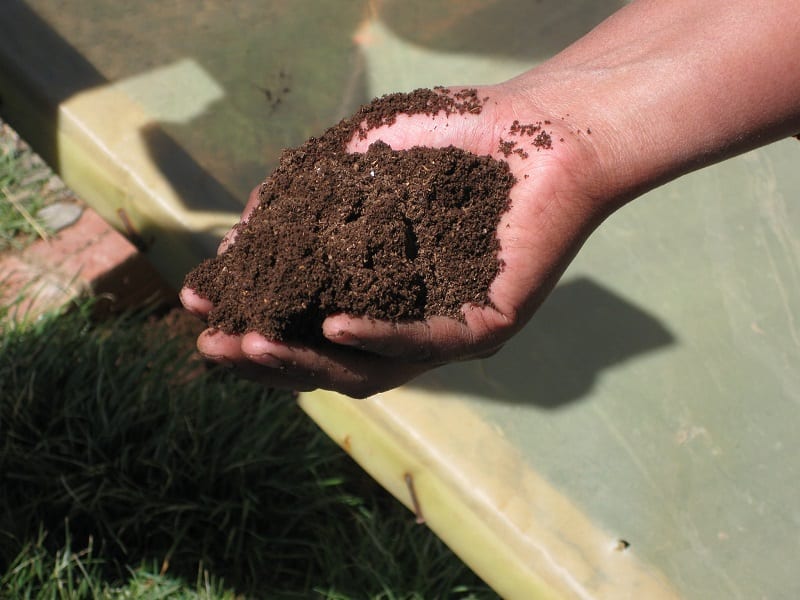
(Photo: Susan Secretariat/Flickr)
Choose The Right Plants
Much of your vegetable garden in containers’ success will also depend on what crops you choose to grow. We suggest that you start your organic container garden with plants that are easy, such as tomatoes, cucumber, radishes, leafy greens, and bush beans.
There are many varieties to each of these plants. Consult your neighborhood nursery or farmer’s market about plants that grow well in your area.
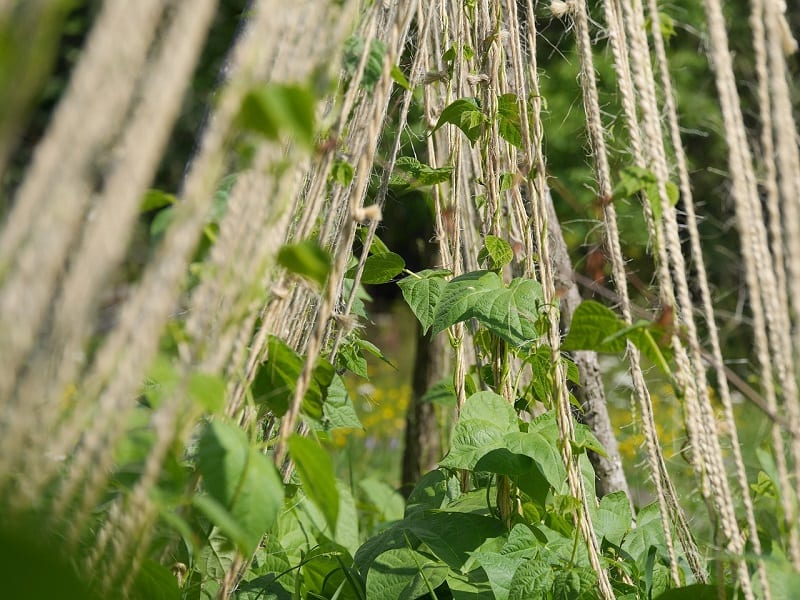
When planting a vegetable garden in containers in the spring, you can either start with seeds or seedlings from the local garden centre.
While seeds are inexpensive, growing vegetables from seeds may not be practical for long-season vegetables in places with short growing seasons.
That’s why most gardeners purchase seedlings when it comes to long-season plants such as tomatoes, peppers, and eggplant. We suggest you follow the same strategy.
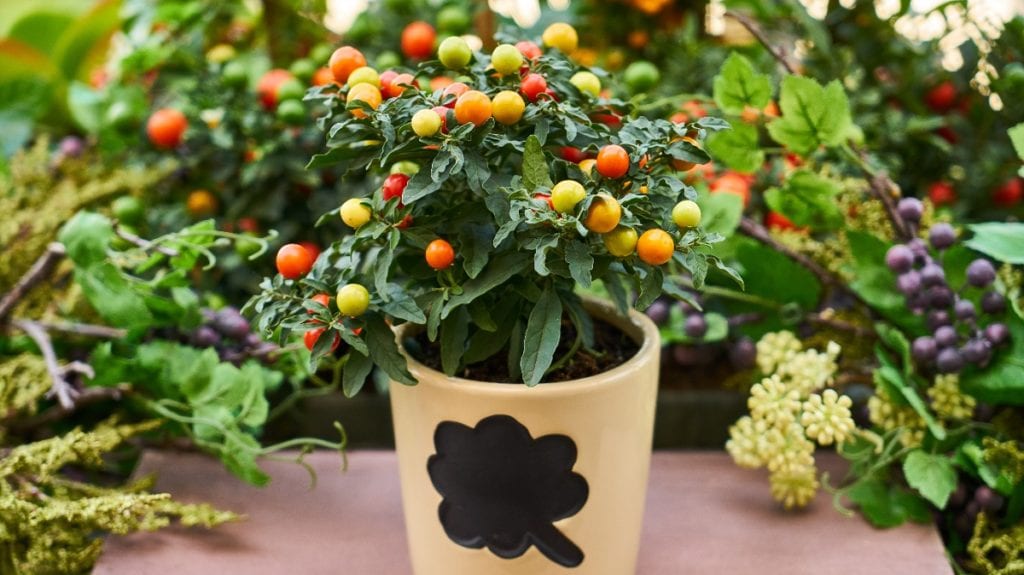
Water Your Garden The Right Way
Proper watering is crucial to the success of a vegetable garden in containers. In container gardening, plants rely heavily on the water you provide since they can’t draw moisture from the ground as they would in traditional gardening. Different vegetables have unique water needs, and it’s important to adjust your watering routine accordingly.
For example, tomato plants in your vegetable garden in containers typically need less frequent watering compared to newly planted seeds like carrots or beets. Overwatering your tomato plants can cause root rot, while under-watering the seedlings may stunt their growth.
Grouping plants in your vegetable garden in containers by their watering requirements is an effective way to manage this. By arranging plants with similar water needs together, you can ensure consistent watering for each group without oversaturating or neglecting certain plants. This strategy will also prevent wasted water and help you maintain a healthy, thriving vegetable garden in containers.
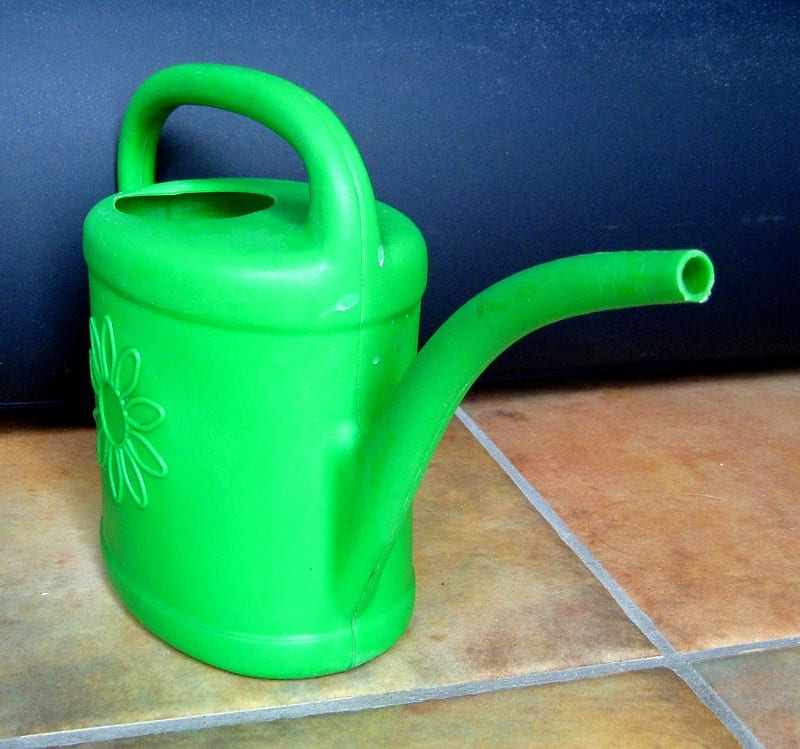
Use Simple, Chemical-free Pest Control Methods
Chemical-free pest control is easier in container gardens. Because the plants are raised above ground level, they’re less susceptible to slugs, rabbits, and other critters. Container gardening also protects plants from soil-borne bacteria and fungi.
If pests do appear in your garden, simply pinch off the affected leaves, buds, or shoot tips. You can pick off larger pests individually, and then drop them into a container of soapy water. If you feel you must spray, look for an insecticidal soap spray at your local garden center and apply accordingly.
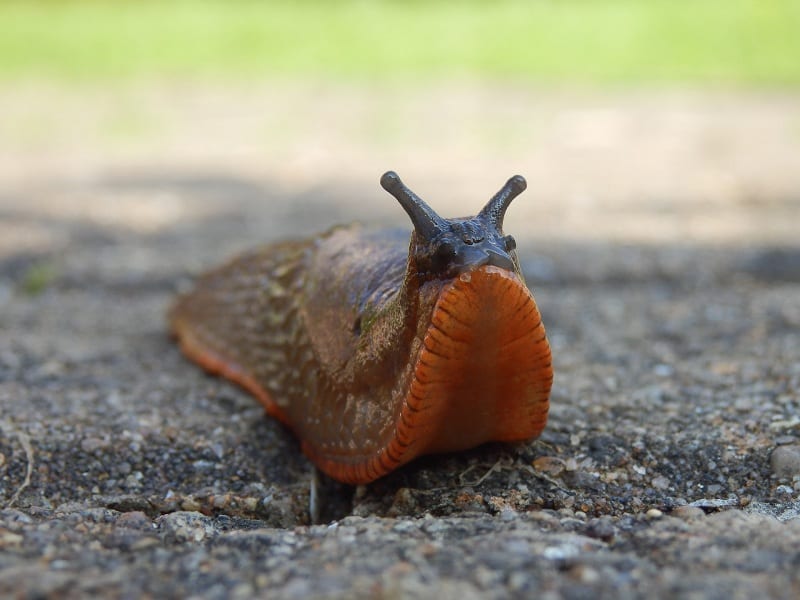
You help the environment by growing organic food right at your home. You also save on the fuel costs of driving to the supermarket.
Best of all, you can eat delicious, healthy, and nutritious home-grown vegetables with no traces of pesticides or herbicides.
Best Vegetables for Year-Round Container Gardening
Starting a vegetable garden in containers offers flexibility and convenience, especially if you want to enjoy fresh produce all year. By choosing the right vegetables and adjusting for seasonal changes, you can keep your garden thriving throughout the year, no matter your climate.
Cool-Season Vegetables
Cool-season vegetables are ideal for the fall and early spring when temperatures are lower. These plants can tolerate cooler weather and often taste better after a light frost.
- Lettuce
Lettuce varieties like romaine and butterhead grow quickly in containers and can be harvested multiple times in cooler weather. It’s one of the easiest vegetables to grow in containers year-round. - Spinach
Spinach thrives in cooler temperatures and can be grown indoors or outdoors. It’s an excellent choice for your vegetable garden in containers, offering high nutritional value and a fast-growing cycle. - Carrots
Shorter carrot varieties do well in containers, especially during the cooler months. Make sure your containers are deep enough to accommodate their root growth.
Warm-Season Vegetables
For the summer months, warm-season vegetables that prefer sunny, hot conditions are best. These plants will flourish with the right watering and sun exposure.
- Tomatoes
Tomatoes are a classic choice for container gardening and can be grown year-round in warmer climates or indoors. Choose dwarf or determinate varieties for a more manageable plant in smaller spaces. - Peppers
Peppers, including bell peppers and chili peppers, thrive in warm weather and are well-suited for growing in containers. They are resilient and productive throughout the summer season. - Cucumbers
Cucumbers are another excellent warm-season vegetable for container gardens. Look for bush or dwarf varieties that will fit comfortably in your space. Trellises can help train vines if you’re tight on space.
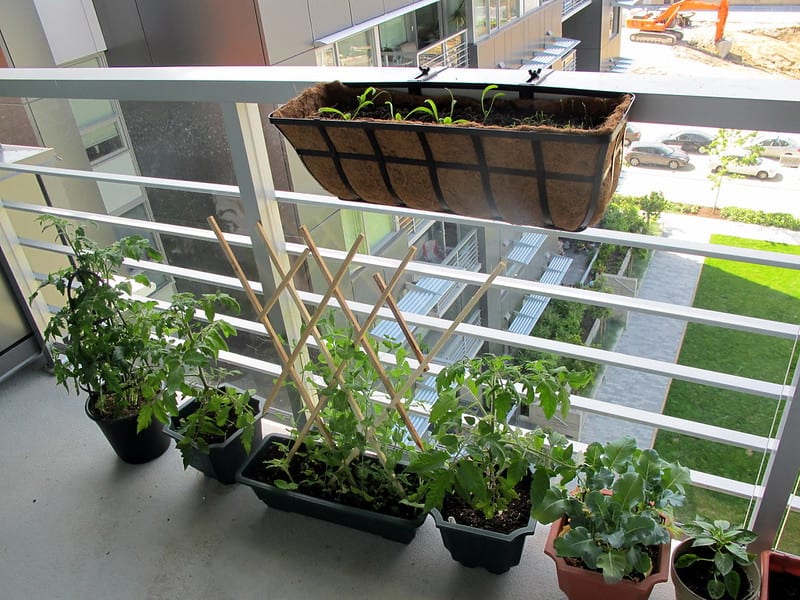
(Photo: Christopher Porter/Flickr)
Year-Round Herbs
While not technically vegetables, herbs can be a great addition to your vegetable garden in containers and are easy to grow throughout the year.
- Basil
Basil is a versatile herb that grows well in warm weather, but it can also be grown indoors during cooler months. Keep it in a sunny spot or under grow lights. - Parsley
Parsley thrives in containers and is relatively low-maintenance. It can be harvested all year and provides a continuous supply of fresh flavor for your meals.
By selecting a variety of cool—and warm-season vegetables, you can ensure your container vegetable garden stays productive no matter the time of year. With proper care, watering, and the right location, you can enjoy fresh vegetables year-round.
Conclusion
Growing a vegetable garden in containers is a great way to have fresh vegetables right at home, no matter how much space you have. When you pick the right plants and care for them properly, you can enjoy your garden all year. It’s an easy, flexible option that works for both new and experienced gardeners.
For more ways to cultivating crops at home, check out our grow-bag gardening guide!


